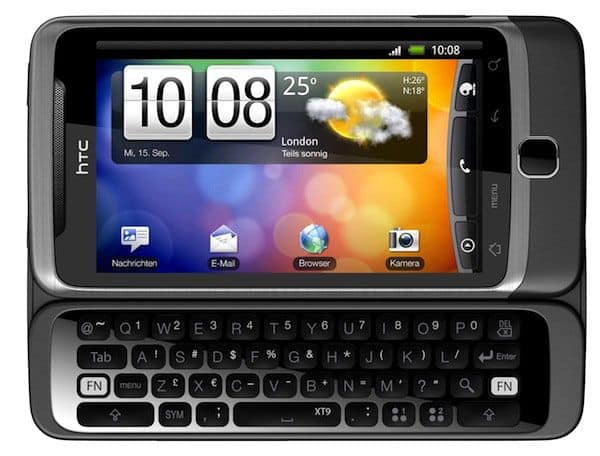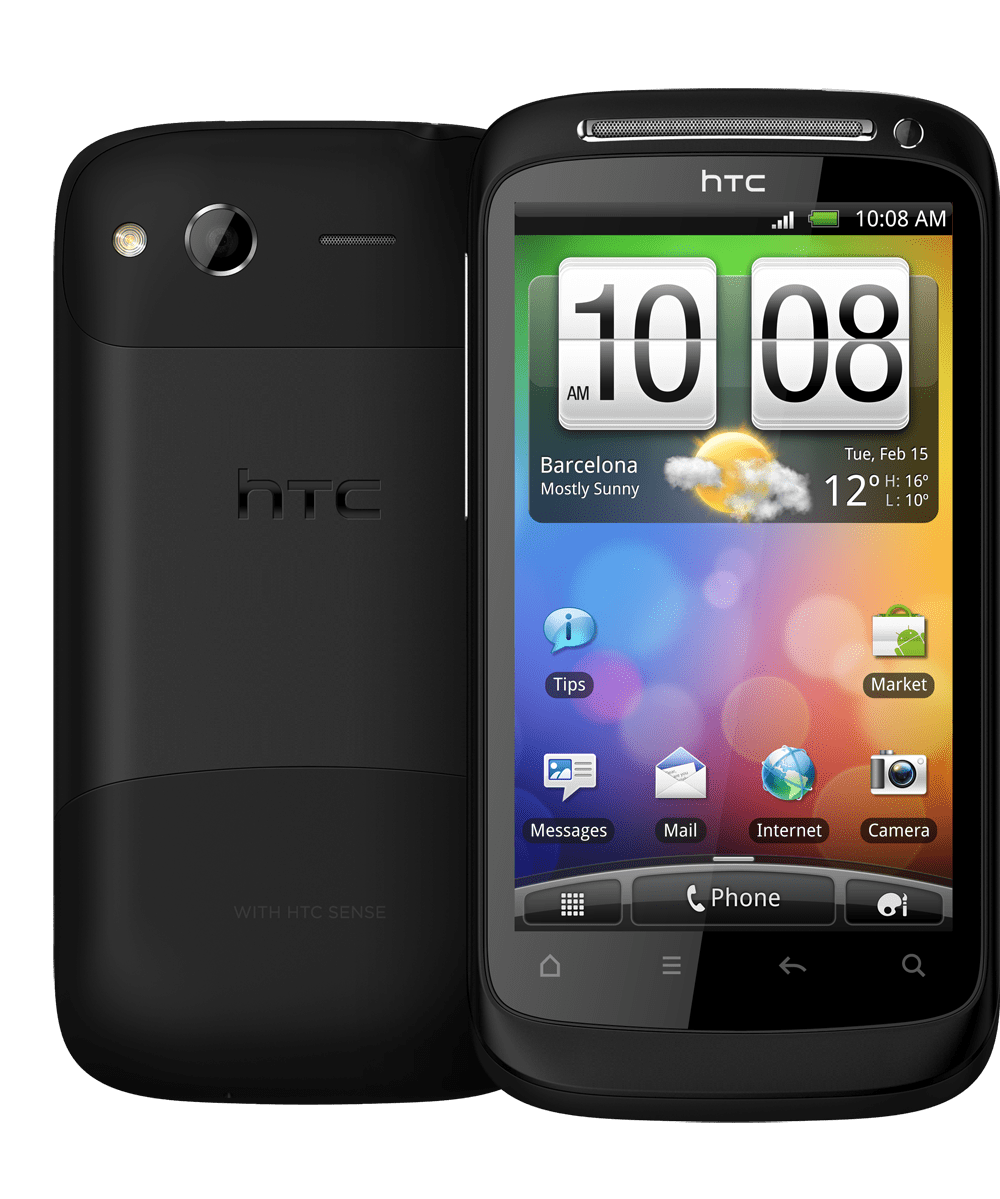Table of Contents
amazon HTC Desire S reviews
The aluminum structure makes up for almost the entire body and two plastic covers on the back of the HTC Desire S make it easy to recall the HTC Legend. The machine is not bent up at the bottom as Legend, but only a small edge. The highlight, as well as the biggest difference compared to the “elder” Desire is that the front panel is no longer used navigation optical navigation and physical keys, but instead is a sequence of touch functions. The microUSB connector has also been shifted to the right instead of the bottom as in the Desire. The front-facing speakers have been extended as well as the availability of a secondary VGA camera for video calling.
Design and Build Quality
The HTC Desire S was notable for its sleek design and high-quality build, which contributed to its premium feel and robust construction.
Dimensions and Build
The Desire S measured 115 x 59.8 x 11.6 mm and weighed 130 grams. The dimensions of the device were well-balanced, offering a comfortable grip and easy handling. The build quality was solid, with a unibody aluminum construction that provided both durability and a sophisticated appearance. The device felt sturdy in hand, and the premium materials used in its construction enhanced its overall feel.
Display
The HTC Desire S featured a 3.7-inch Super LCD display with a resolution of 480 x 800 pixels. This screen size was considered optimal for its time, offering a good balance between usability and portability. The Super LCD technology provided vibrant colors, high contrast, and wide viewing angles, making the display suitable for various tasks such as browsing, media consumption, and gaming.
The display’s resolution of 480 x 800 pixels resulted in a pixel density of approximately 252 pixels per inch (PPI). While not as high as later devices, the resolution was adequate for delivering sharp and clear visuals. The screen’s brightness and color reproduction were excellent, contributing to a positive viewing experience in different lighting conditions.
Design Elements
The front of the Desire S featured a smooth, curved design with a physical button layout that included a Home button, Back button, and Menu button below the display. The device’s design was clean and minimalistic, with the physical buttons seamlessly integrated into the overall aesthetic.
The top of the device housed the power button and the 3.5mm headphone jack, while the bottom featured the micro-USB port for charging and data transfer. The rear of the device was dominated by the 5-megapixel camera and a single LED flash, positioned centrally. The HTC logo was subtly placed on the back, adding to the device’s understated elegance.
Overall, the HTC Desire S’s design was a significant improvement over its predecessor, featuring a more refined look and feel that resonated with users seeking a high-quality smartphone experience.
Display and Touchscreen
The display of the HTC Desire S was one of its key features, designed to provide an engaging and immersive user experience.
Screen Size and Resolution
The 3.7-inch Super LCD display offered a balanced size that was easy to use with one hand while still providing ample screen real estate for various applications. The resolution of 480 x 800 pixels was suitable for most tasks, including web browsing, watching videos, and gaming. The pixel density of 252 PPI ensured that text and images were displayed clearly, contributing to a pleasant user experience.
Touchscreen Performance
The capacitive touchscreen of the Desire S was highly responsive and supported multi-touch gestures, allowing for smooth navigation and interaction with the operating system. The touch sensitivity was accurate, with minimal lag or delay during input. This responsiveness was particularly important for tasks such as typing, swiping, and zooming, making the device intuitive and easy to use.
Display Quality
The Super LCD technology used in the Desire S’s display provided vibrant colors and deep blacks, contributing to excellent contrast and brightness. The screen’s performance was particularly noticeable when viewing photos, videos, and multimedia content. The display’s visibility under various lighting conditions was also commendable, with good legibility in both indoor and outdoor environments.
The camera’s main camera gives good image quality in normal light conditions. If the condition is to use flash light or set to macro shooting mode, the camera machine image quality is much worse. The ability to record video (support 720p movie recording) is similar to the ability to take pictures.
The Desire S’s removable battery is similar to the one on the HTC Legend. The user removes the back cover, lightly flips the battery cover for battery, memory card and sim card. External loudspeaker loud, clear.
HTC Desire S features Snapdragon 1Ghz processor, 768 MB RAM, WVGA resolution screen. In fact, the feel and smoothness of the images displayed on the Desire S’s screen is much better than Desire (using AMOLED screens). The memory that Desire S has is a solid foundation for performance as well as meeting current user needs.
HTC Desire S integrates the latest version of Android 2.3.3 from Google, incorporating the latest Sense UI. Actually, it is easy to set up as well as fine tune the options of the machine and the application system.
where can you get a HTC Desire S online
HTC Desire S S510E Unlocked QuadBand GSM Phone with Android OS, 3.7″ Display, HTC Sense UI, 5 MP Camera, Wi-Fi and GPS–International Version without Warranty: Buy it now
Performance and Hardware
The HTC Desire S was equipped with hardware designed to deliver a smooth and responsive performance, leveraging the Android operating system.
Processor and RAM
The Desire S was powered by a 1 GHz Qualcomm Snapdragon MSM8255 processor, which was a significant improvement over its predecessor. The processor provided ample power for running applications and handling multitasking. The device also featured 768 MB of RAM, which supported smooth operation and responsive performance across various tasks.
Storage
The HTC Desire S came with 1.1 GB of internal storage, which was expandable via a microSD card slot. The inclusion of expandable storage allowed users to increase the available space for apps, media, and other files. The microSD card slot supported cards up to 32 GB, providing flexibility for users with extensive storage needs.
Battery Life
The Desire S was equipped with a 1450 mAh lithium-ion battery. The battery life was generally adequate for a day of moderate use, including web browsing, media consumption, and phone calls. For more intensive usage, such as gaming or video playback, the battery life might have been shorter. The device’s removable battery allowed users to carry a spare for extended use, though the battery performance was competitive for its time.
The latest Sense version on the Desire S 3-D picture design, updated the user input information quickly and fairly lightly. HTC also integrates user-friendly utilities such as Office, Kobo reader, real-time FriendStream visual updates (Facebook, Twitter, Flickr), digital media connection (Media Controller), weather or Quickly set customizable widgets on the Notifications bar …
The latest Google functionality for Android 2.3 is available on the Desire S. Typically the ability to use 3G to play Wi-Fi. Actually tested that feature has done very well, better than some smartphones using Android 2.2 or even Nexus One is using Android 2.3. Besides, with the support of strong hardware, the use of software is considered resource consuming as well as download games on the Market are Desire S perform very well. However, actual use suggests that playing games or using software entangles the design of touch-sensitive keys. The screen size is only 3.7 inches plus the design of the touch pad is quite close to the screen so easy to press on. Although the screen is not so great, the virtual keyboard that the HTC Desire S integrated keyboard allows for fine-tuning and editing, both horizontally and vertically.
Although the Desire S’s battery capacity is 1,450mAh, average performance and pre-installed applications are actually only one day. In addition, the design of the touch pad is close to the screen, the quality of the camera is not matched, not upgrading the processor to meet the dual-core trend … are also some weaknesses of the product.
Software and User Interface
The HTC Desire S ran on Android 2.3 Gingerbread, customized with HTC’s Sense UI. The combination of Android and Sense UI provided a user-friendly and feature-rich experience.
Android 2.3 Gingerbread
Android 2.3 Gingerbread was a significant update to Google’s mobile operating system, offering improvements in performance, user interface, and functionality. The operating system featured a more refined design, with enhancements to the overall user experience and support for new features.
The Desire S’s implementation of Gingerbread provided a smooth and responsive experience, with support for features such as improved multitasking, enhanced copy and paste functionality, and an updated virtual keyboard.
HTC Sense UI
HTC’s Sense UI was a key feature of the Desire S, offering a customized user interface with additional features and enhancements. Sense UI included a range of widgets, including weather, calendar, and social media widgets, which provided quick access to essential information and services.
The Sense UI also featured a customizable home screen with multiple panels, allowing users to personalize their device and arrange widgets and shortcuts according to their preferences. The interface included a range of themes and visual enhancements, contributing to a more engaging and visually appealing experience.
HTC Customizations
HTC added several custom applications and features to the Desire S, including HTC Hub, HTC Watch, and HTC Sense Companion. These customizations provided additional functionality and services, enhancing the overall user experience.
HTC Hub offered access to a variety of apps, widgets, and themes, while HTC Watch provided a platform for purchasing and watching movies and TV shows. HTC Sense Companion was designed to offer personalized recommendations and insights based on user behavior and preferences.
Connectivity and Network
The HTC Desire S supported a range of connectivity options to ensure users could stay connected and access various services.
Network Connectivity
The Desire S supported GSM networks on the 850, 900, 1800, and 1900 MHz bands, as well as 3G connectivity on the 900 and 2100 MHz bands. This provided compatibility with a wide range of carriers and ensured reliable connectivity for voice calls and data transfer.
Wireless Connectivity
The device featured Wi-Fi 802.11 b/g/n support, allowing users to connect to wireless networks for faster internet access and reduced data usage. The Desire S also included Bluetooth 2.1, which supported wireless connectivity with Bluetooth accessories such as headphones and speakers.
GPS and Navigation
The HTC Desire S included GPS functionality, providing location services for navigation and location-based applications. The device’s integration with Google Maps and other navigation apps offered users access to mapping and turn-by-turn directions. The GPS performance was generally accurate, with reliable location tracking and navigation capabilities.
Strength
– Beautiful design, sure.
– The screen is clear, beautiful.
– Advantage of RAM.
– Built-in latest version of Android (2.3.3).
– Performance works very well.
– Good job support and entertainment features.
– Full, powerful connection.
Weak
– Difficulty replacing sim or memory card due to design.
– Battery life is short.
– Camera does not match the performance of the machine.
– Single core chip.

